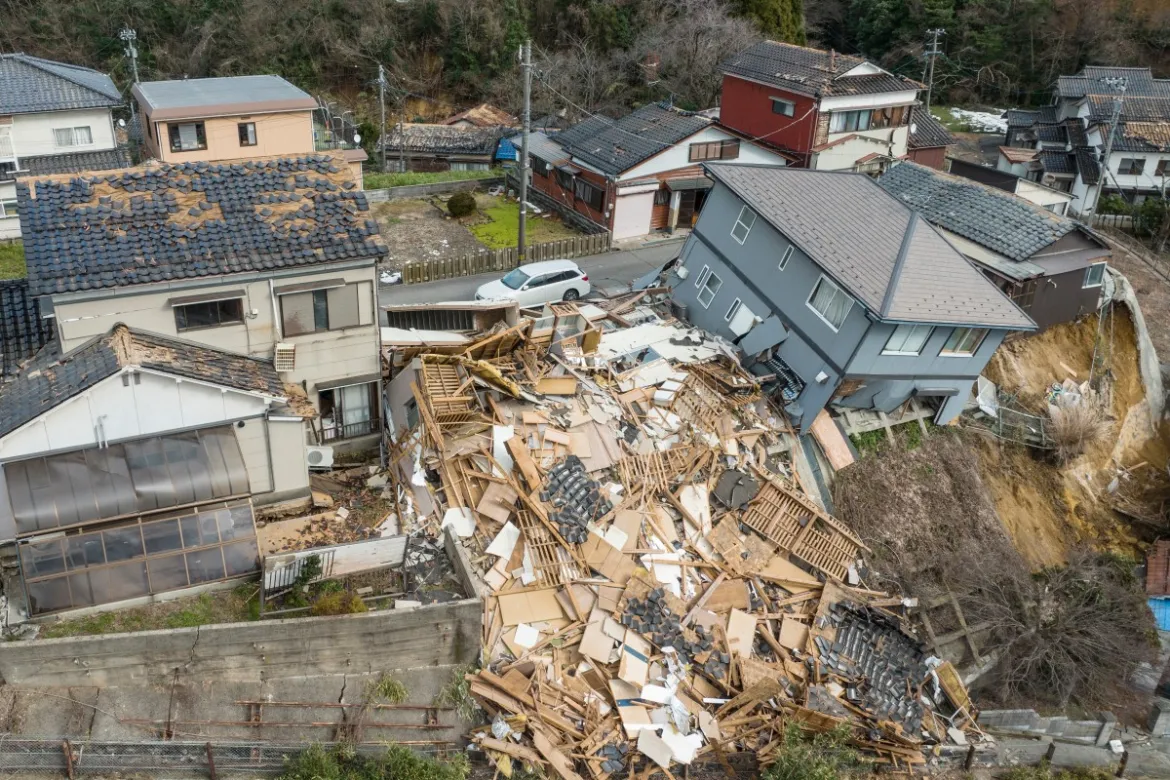Introduction
In the annals of natural disasters, the earthquake that struck Japan in 2004 stands out as one of the most devastating and impactful events in recent history. This seismic upheaval not only shook the very foundations of the country but also had profound implications for global perspectives on earthquake preparedness and response. In this comprehensive article, we delve into the details of the 2004 earthquake in Japan, exploring its causes, the extent of damage, the aftermath, and the lessons learned. Additionally, we will discuss the resilience of the Japanese people and the advancements in earthquake preparedness that have since been implemented.
1. Overview of the 2004 Japan Earthquake
The 2004 Japan earthquake, also known as the Chūetsu earthquake, struck the Niigata region on October 23, 2004. Registering a magnitude of 6.6, the earthquake originated from a fault zone beneath the Sea of Japan. Its epicenter was located near the city of Niigata, affecting a significant portion of the Honshu island, Japan’s main island. The quake occurred at a relatively shallow depth, intensifying its impact on the surface.
2. Causes and Tectonic Context
Japan is situated on the Pacific Ring of Fire, an area known for its high seismic activity due to the presence of several tectonic plates. The 2004 earthquake occurred at the convergent boundary between the Pacific Plate and the North American Plate. The intense geological activity in this region results from the subduction of the Pacific Plate beneath the North American Plate, creating an environment conducive to seismic events.
3. Extent of Damage
The seismic event unleashed a cascade of destructive forces, causing widespread damage to infrastructure, homes, and the local economy. The city of Niigata bore the brunt of the impact, with collapsed buildings, damaged bridges, and disrupted transportation systems. The damage extended to neighboring towns and villages, amplifying the scale of the disaster.
4. Human Impact and Resilience
The 2004 earthquake in Japan had a profound impact on the lives of the affected population. Lives were lost, homes were destroyed, and communities were shattered. However, one of the enduring aspects of this tragedy is the resilience demonstrated by the Japanese people.
The response to the disaster showcased the effectiveness of Japan’s emergency preparedness and response mechanisms. Evacuation plans were swiftly implemented, and rescue teams mobilized to provide assistance to those in need. The resilience and solidarity of the affected communities were evident as survivors came together to support each other amidst the chaos.
5. Lessons Learned and Evolving Preparedness
In the aftermath of the 2004 earthquake, Japan underwent a thorough evaluation of its earthquake preparedness strategies. This introspective analysis led to the implementation of enhanced building codes, retrofitting of critical infrastructure, and improvements in early warning systems. The earthquake served as a catalyst for research and development in seismology and engineering, leading to innovative solutions for mitigating the impact of future seismic events.
The lessons learned from the 2004 earthquake have contributed to the development of a more robust and comprehensive approach to earthquake preparedness not only in Japan but also globally. The international community, including seismic-prone regions, has looked to Japan as a model for effective disaster management and response.
6. Global Implications and Collaborative Initiatives
The 2004 earthquake in Japan prompted a reevaluation of earthquake preparedness on a global scale. Countries with seismic risk began to reassess their infrastructure, emergency response plans, and public awareness campaigns. International organizations and research institutions collaborated to share knowledge and best practices, fostering a collective effort to mitigate the impact of seismic events worldwide.
Collaborative initiatives, such as the development of early warning systems and the establishment of regional seismic networks, have been instrumental in minimizing the loss of life and property during earthquakes. The experience of the 2004 earthquake has become a case study for international cooperation in disaster management, emphasizing the importance of solidarity in the face of natural calamities.
7. Ongoing Challenges and Future Prospects
Despite the strides made in earthquake preparedness and response, challenges persist. The dynamic nature of tectonic activity and the unpredictability of earthquakes necessitate ongoing efforts to refine strategies and technologies. Continued research, public education, and community engagement remain vital components of mitigating the impact of seismic events.
Looking forward, advancements in technology, such as the integration of artificial intelligence and real-time monitoring systems, offer promising avenues for improving earthquake prediction and response capabilities. These innovations, coupled with a commitment to sustainable urban planning and resilient infrastructure, will play a pivotal role in shaping the future of earthquake resilience.
Conclusion
The 2004 earthquake in Japan stands as a pivotal moment in the realm of earthquake preparedness and response. Through the devastation wrought by this seismic event, Japan emerged as a beacon of resilience and a source of valuable lessons for the global community. The collaborative efforts, technological advancements, and ongoing research inspired by the 2004 earthquake have collectively contributed to a more resilient and prepared world in the face of seismic challenges. As we reflect on this significant chapter in history, it serves as a reminder of the importance of learning from the past to build a safer and more secure future.
